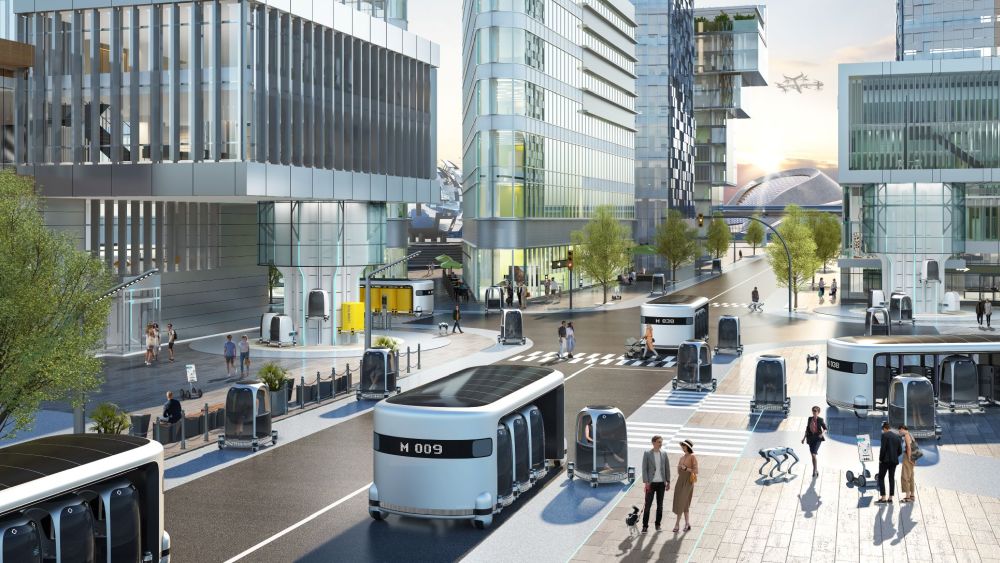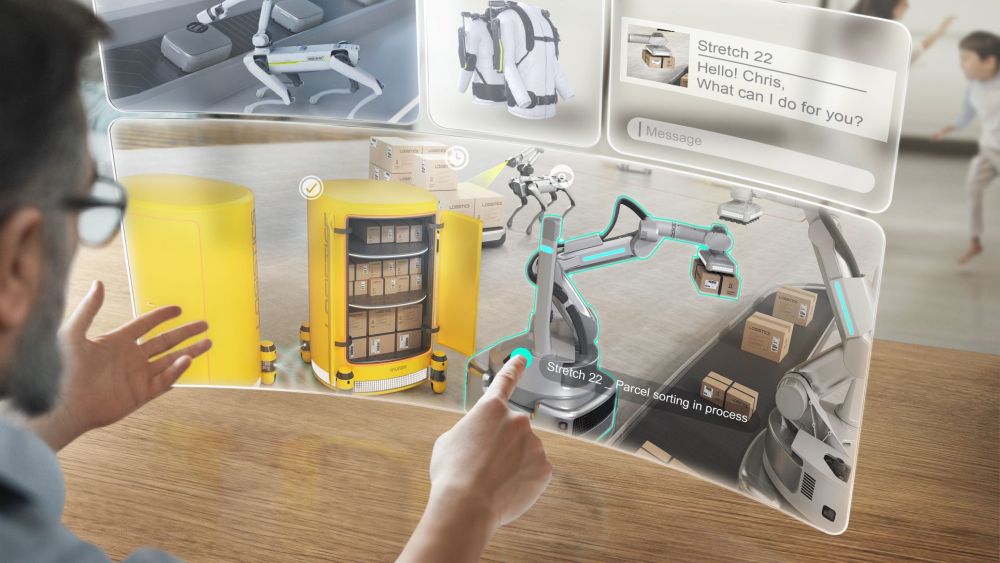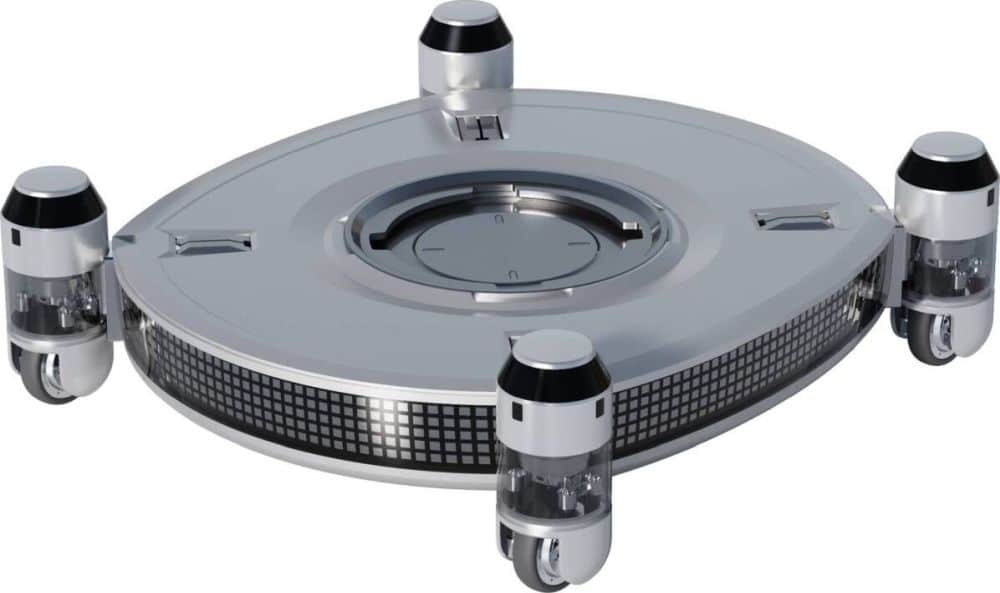Hyundai Motor Company unveiled its vision of how robotics can be used both in the real world and in the metaverse, creating a new noun that we will hear about for a long time, namely “Metamobility”. The presentation took place at CES 2022 in Las Vegas.
The main theme of the presentation “Expanding Human Reach” Hyundai reflects on how its robotics business will drive change towards the mobility of the future, which will go beyond traditional means of transport to make it free and unlimited.
Robotics is an essential part of Hyundai’s transformation into a smart mobility solutions provider. With the acquisition of Boston Dynamics, an innovative company in this field, Hyundai focused on advancing robotics to improve people’s lives by developing a range of mobility solutions. The company considers robotics and mobility to be complementary, as one accelerates the development of the other and vice versa. Together they form a synergistic combination that will add value to business and drive the progress of humanity, starting with an ecosystem of Mobility of Things (MoT) based on robotics.

In support of its vision of the future on robotics and mobility, Hyundai has unveiled its new concept of “Metamobility” which aims to guide the connection between smart devices and the metaverse to extend the role of mobility to virtual reality (VR). Basically it wants to allow people to overcome the physical limits of movement in time and space. Hyundai also shared their vision how robots will act as a link between the real world and virtual spaces, allowing users to make changes in the metaverse that, in turn, are reflected in reality.
The company predicts that the differences between the different mobility options of the future will be blurred thanks to robotic technologies such as artificial intelligence and autonomous driving. Different mobility solutions, such as cars and mobility vehicles in urban areas, will act as smart devices to access the metaverse platform.
Hyundai, real world connects to the metaverse through robots and “metamobility”
As the metaverse will become an everyday space for people in the future, the company expects the possible emergence of a new type of metaverse platform where the difference with reality could disappear, breaking with the concept of virtual reality as we know it. today.
What was previously limited to a virtual experience due to technological limitations, can now be extrapolated to the real world by connecting smart devices, allowing users complete freedom of movement between the two worlds. Hyundai defines the concept of this type of experience as metamobility.
Hyundai Motor expects mobility solutions such as cars and mobility vehicles in urban areas to act as smart devices for accessing virtual spaces and robotics to act as a means of connecting the virtual and real worlds. For example, a car that connects to virtual spaces could allow users to enjoy different virtual reality experiences inside the vehicle. Depending on the user’s needs, the car can be transformed into an entertainment space, a meeting room for work or even a 3D video game platform.
Unlike the virtual reality we know today, where user experiences are not reflected in the real world due to technological limitations, future users of the metaverse will be able to influence the real world through robotics and digital twin technology, a virtual representation of a physical object, place or process that will be possible thanks to new advances in sensors and actuators.

Eg, a user who is away from their physical home will be able to access a digital twin from their home in the metaverse and thus feed and cuddle their pet using and robot avatar. This will allow users to enjoy real world experiences through virtual reality.
Through metamobility, robots will help people overcome the physical limits of time and space by providing a means in the metaverse to connect and interact. Hyundai Motor imagine un metaverse that uses robots as a link between the real and virtual world, allowing people to change and transform things in the real world through a metaverse and a robotic connection.
Hybdai, here are the new “all-in-one” platforms for the MoT ecosystem
Hyundai Motor also unveiled its modular platforms Plug & Drive (PnD) e Drive & Lift (DnL) as all-in-one solutions for its ecosystem of Mobility of Things (MoT), where traditionally inanimate things, from small objects to the community, spaces will acquire mobility using the company’s robotic technologies.
Dong Jin Hyun, vice president and director of robotics laboratory at Hyundai Motor Group, highlighted the new PnD module. It is a single-wheel robotic platform that combines intelligent steering, braking, an integrated electric powertrain, and suspension that can be scaled up or down for any purpose, size or application. LiDAR and camera sensors allow an object with a PnD module to move independently.

The PnD module can provide mobility to normally inanimate things, from small objects to community spaces. Its applications are practically limitless, as it can provide freedom of movement for people with disabilities and create mobility solutions for automated logistics, configurable interior spaces, last mile mobility or establish individual compartments to maintain social distance in public transport.
Hyundai Motor also exhibited the small mobility platform MobED (Mobile Eccentric Droid), which takes full advantage of the modulo DnL, an eccentric wheel mechanism that combines traction, steering and braking systems in a single structure. With a DnL module mounted on each wheel, the platform can move up and down, ensuring that the structure can remain completely level when moving over uneven ground or low obstacles such as steps or bumps.
Even the founder and president of Boston Dynamics Marc Raibert joined the presentation to show how the two companies are taking mobility beyond human physical limits using current robotic technologies. Together, they envision a future where people and robots will work together, improving safety, productivity and quality of life.
For example, “wearable” robots Hyundai Vest Exoskeleton (VEX) e Chairless Exoskeleton (CEX), as well as Boston Dynamics’ quadruped Spot, they are suitable in contexts such as industrial work and offer very promising solutions for other applications, including search and rescue missions.
















Leave a Reply
View Comments